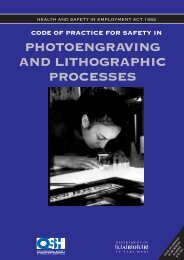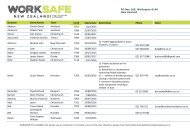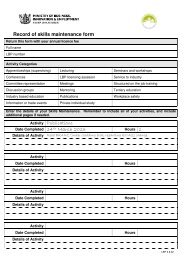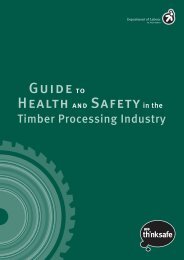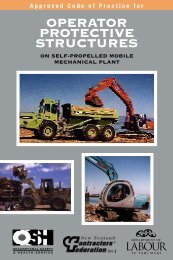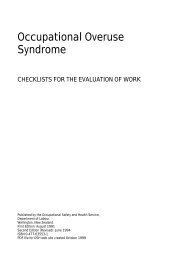Annual Report 2012 - Business.govt.nz
Annual Report 2012 - Business.govt.nz
Annual Report 2012 - Business.govt.nz
Create successful ePaper yourself
Turn your PDF publications into a flip-book with our unique Google optimized e-Paper software.
IntroductionThe Ministry of <strong>Business</strong>, Innovation and Employment’s two Asbestos Registers - the DiseaseRegister and the Exposure Register - have been in existence since 1992. When established,they had the following objectives:1. to raise awareness of asbestos-related disease nationally2. to improve the radiological diagnosis of asbestos disease by using the ILO referenceradiographs3. to confirm that pleural plaques is a disease and not just a marker for asbestosexposure4. to reinforce the importance of patient support groups.Since these four objectives were defined, technological developments have seen HRCT (HighResolution Computed Tomography) superseding ILO X-ray classification.The legacy of disease from working with and exposure to asbestos in New Zealand iscontinuing. Exposure is now largely confined to home renovators, demolition workers,carpenters, electrical and plumbing workers, building maintenance workers and asbestosremoval workers.The demolition, rebuild and renovations arising from the 2010-2011 Christchurchearthquakes have again brought asbestos exposure in the construction industry to the fore.Worldwide, asbestos exposure still occurs at a high level; and a number of lessons can belearned as a result.Firstly, there continues to be a general lack of awareness of the effects of inhaling dust atwork, regardless of the type of dust. Secondly, too great an emphasis has been put on thenature of the dust and whether or not dust is a danger to health. Views that cement dust issafe and silica dust is unsafe; or blue asbestos is worse than white asbestos have distractedusers from the real issue; that is, the need to remove all dust from workplace air.Today, dust is recognised as a major problem in the workplace, both in terms of respiratoryhealth and general health. While its solutions are not complex, they do involve identifyingthe source of the dust and containing it. At a personal level, there is also the need toprovide comfortable and effective, fit-tested respiratory protection.With a gradual reduction in cigarette smoking among the working population, the impact ofdirty workplace air on respiratory health is likely to become clearer, with diseases such aswelder’s lung, asthma, and chronic obstructive pulmonary disease (COPD) recognised moreclearly for their relationship to work practices and procedures.Dr W. I. Glass (Convenor)Dr R. ArmstrongDr D. JonesNational Asbestos Medical PanelSeptember 2013Asbestos and other Occupational Lung Diseases in New Zealand <strong>2012</strong> <strong>Annual</strong> <strong>Report</strong> Page 4


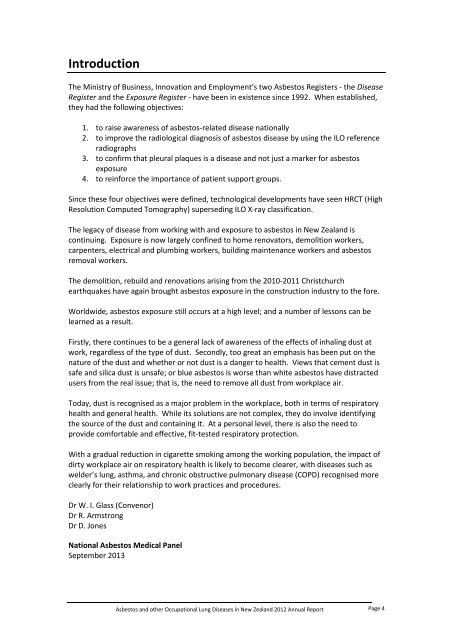

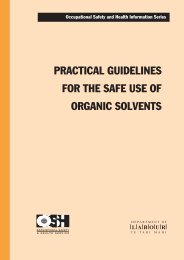
![Task analysis worksheet [161 KB PDF] - Business.govt.nz](https://img.yumpu.com/51400981/1/190x135/task-analysis-worksheet-161-kb-pdf-businessgovtnz.jpg?quality=85)
